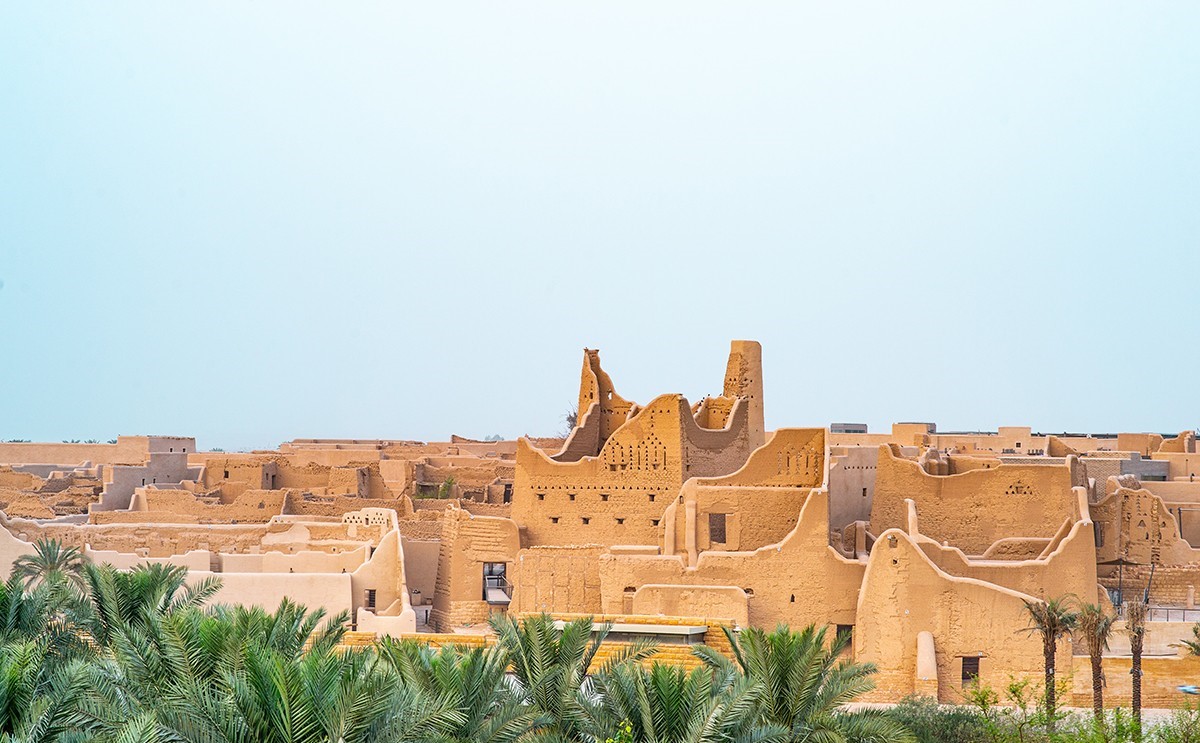Preserving modernist and postmodern buildings in the Kingdom,
After it was decided to demolish the Al-Rubu’ Mosque, Jeddah’s elegant white and blue minaret,
jackhammers pierced the dome of the building.
And then the rich golden line was revealed inside it, and the act appeared on the destruction of the (Al Rubu’) Mosque,
which began to face changing attitudes towards preserving modernist and postmodern buildings in the Kingdom.
Calls began to stop the destruction, local and international architecture practices wrote letters of complaint,
and there were rumors that the Saudi Ministry of Culture stepped in to save the 1980s-era building.
But the Rubu’ mosque was demolished, leaving a pile of rubble that will soon be moved to build a new, larger place of worship.
The calls could not save the Al-Rubu’ Mosque, and the changing perceptions about architecture emerged in the seventies and eighties in the Gulf.
New initiatives seek to create more robust mechanisms to preserve modernist and postmodern buildings.

The oil boom and the urban environment
During the second oil boom of the 1980s, much of the urban environment was built.
That’s when architects flocked to the bay, building residences, mosques, office buildings and shopping centers for the growing cities.
Many of them were part of the Non-Aligned Movement, coming from neighboring countries such as
Syria and Iraq, other architecture was part of the tradition of Arab-influenced modernity.
Many buildings now stand with dilapidated facades, or internal systems such as air conditioning or lighting have stopped working.
And in the current construction boom in Saudi Arabia, it seems easier to tear them down and build again.
But there is an urgent need to document and value things about architecture that people may not be looking at very much.
Because that is partial awareness and documentation of things before they disappear, in a world dominated by real estate developments and private stakeholders.

Saudi Architectural Engineering Company
The Saudi Architecture Firm was established in Riyadh, in 2020, to advocate for greater preservation of 1970s and 1980s buildings.
An archive of buildings under threat was created, and interest in documenting existing architecture began at a time of rapid redevelopment.
And a huge leap started in all the Gulf countries in terms of construction and architecture,
so it was necessary to get to know the important projects and the people behind them.
In addition to the socio-economic status that has been achieved through it.
Saudi Arabia has put in place laws about conservation but in practice conservation mostly relates to buildings that are viewed as national heritage.
Like the 18th century Salwa Palace in Diriyah, as construction spread under the New Economic Plan of Saudi Arabia,
many buildings from the 1980s and 1990s were demolished without much discussion.
Despite a few years late, Saudi Arabia is catching up in terms of conservation.
Although he says the Ministry of Culture has taken control of Iraq Hospital on the outskirts of Riyadh,
the Saudi Architectural Firm asserts that the ministry will restore it.
The private Misk Art Institute also renovated Prince Faisal bin Fahd Art Hall,
which dates back to the eighties, to build its main building.
You may like: Conservation of urban heritage in the Kingdom of Saudi Arabia
